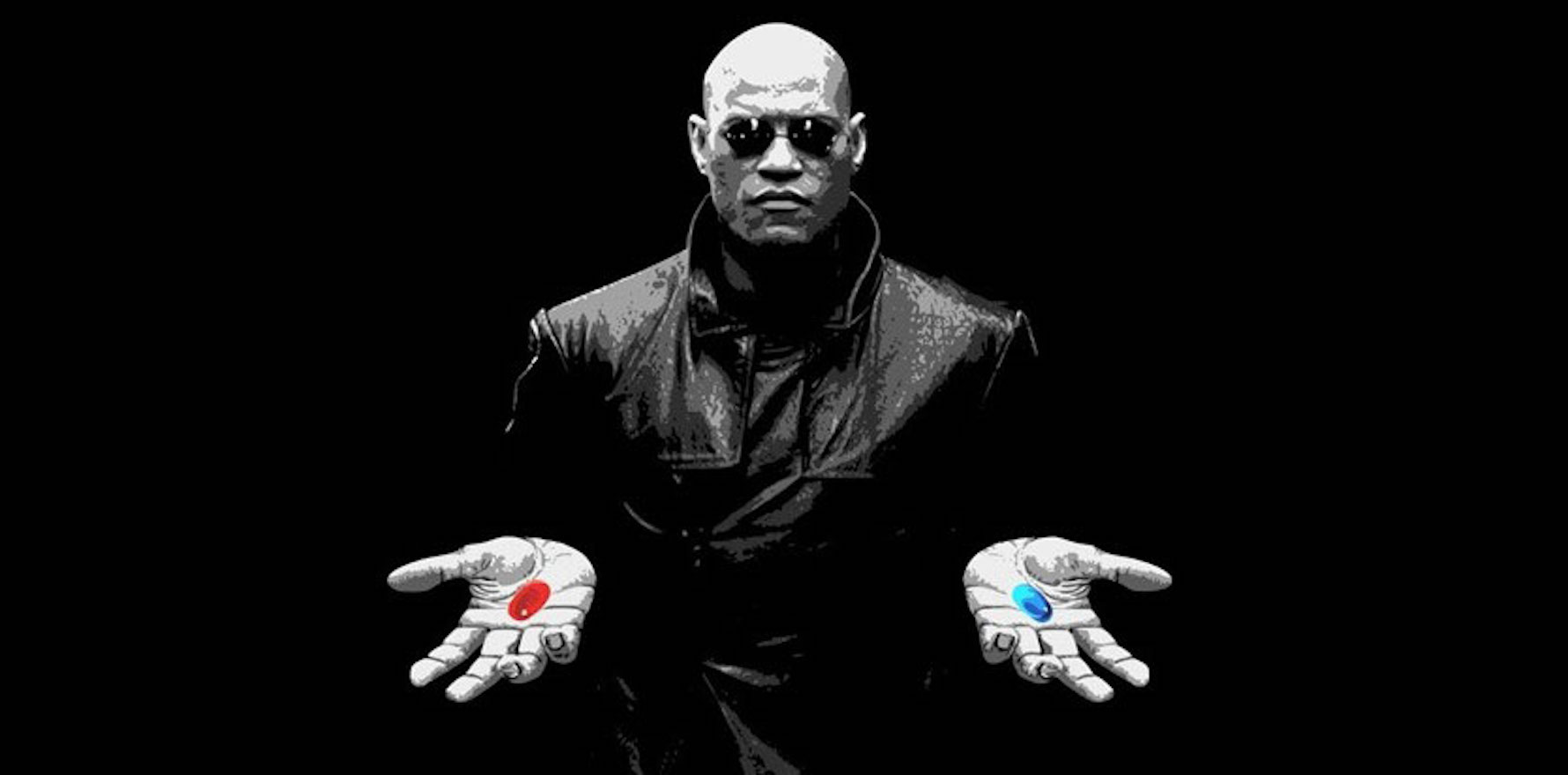Nationalising a chunk of our digital health industry and slashing the price of e-scripts is apparently the way the DoH does business these days.
If you add up all the initiatives of the Department of Health that have as their endpoint significantly increased control over vital parts of our healthcare system – for example, GP education and training, PHN influence and power, rural health doctor placements, reinforcing the PSR – you might start to wonder if at any point this activity might start to fold back on itself.
A tender released this past week by the department to run the vital e-script ecosystem of the country for the next four years looks like a good candidate for the right political master to finally ask: is this department a tad out of control?
The DoH has put out a tender that overtly expresses the intent of the government to exert near-complete control of two well-running and successful private digital health companies, and with them, a crucial and evolving piece of our digital health infrastructure: electronic scripts.
Fun fact (not) for all GPs: 38% of the scripts you write (in total, doctors write 320 million each year) put money in the pocket of the Pharmacy Guild of Australia, which owns 35% of our largest electronic script exchange, eRx (Telstra owns 50%, if that makes you feel any better), which has about 90% share of eScript exchange market. While it’s not a monopoly, well, it’s doing very well, thank you.
But is it doing so well that the DoH should come up with a plan that effectively nationalises this private company?
It is estimated that our electronic script ecosystem, of which MediSecure and eRx are the beating heart, now save between 6,000 and 12,000 hospital admissions in this country each year, and with that, direct costs to our healthcare system of $100 million.
Doing well or not, that makes eRx, which takes only about $16 million in revenue off the DoH to do most of this job, a pretty good return on investment to our healthcare system, especially when you look at the return of other major health infrastructure the DoH invests in. We’ve spent more than $2 billion on the My Health Record so far and we spend about $290 million each year on the Australian Digital Health Agency (ADHA), neither of which have provided us anywhere near as good return as this project. In fact we are adding 70 staff and $60m to the ADHA in this latest budget.
You’d have thought that with an election just weeks away, nationalising a couple of our well-run private digital health companies, just to get your way, might be a bridge too far. But that is what the tender put out by the DoH for eScript services over the next four years pretty much describes.
The problem for the DoH might be that the idea that a federal government department is setting out to, in essence, have a go at nationalising a few key private companies that run a major part of our e-health infrastructure isn’t just a problem for our local private digital health sector – it should also send chills down the spine of any business that wants to do, or already does, business with the federal government.
The DoH wants to hope that the real issues underlying their tender aren’t picked up by the broader business press and examined properly. It might get sticky, election wise.
At the very least, the existence of a tender with these demands and intents will significantly dent the confidence of anyone thinking about investing into digital health innovation in Australia.
It will also have come as a shock to our many long-established private local medical software vendors and their investors, who underpin much of our healthcare system with key electronic health record (EHR), billing and other patient data platforms. These include groups such Best Practice, Medical Director, Zedmed, Fred IT and others, all of whom serve as vital platforms in the smooth operation of our primary care sector.
Who will be next to be subsumed by the DoH at a whim when they want something more to their liking?
In e-scripts, the DoH is the primary direct funding body for both companies involved in providing delivery services, so it has always had a large degree of power in the background of our e-scripts ecosystem.
But, this tender proposes pricing up to 65-80% less than what the government has been paying for e-scripts for 10 years now. The tender threatens the two existing long-term vendors with extinction if they don’t kneel before the department and do what it wants. One of these long-term suppliers, or even both, may not survive the tender.
It suggests the department can pick a new provider if it likes, and mandates that anyone who wins its tender will have to hand over all of their hard-earned IP to the department (though this is a boiler-plate-type term in federal health contracts, it’s a real consideration for anyone wanting to tender their services and offer up their IP).
In the case of this tender the DoH is the major funding body, but the reality is the DoH thinks it indirectly funds a lot of our other important healthcare tech vendors, such as our patient management system companies, via the MBS.
GPs have a pretty good idea of what that feels like.
A tender like this makes one think the department is starting to develop a God complex.
If this tender process keeps going, and the price paid for e-scripts in the country is reduced by 65-80%, a big chunk of that reduction will come off the margins of our GP PMS vendors and our pharmacy-dispensing vendors.
This is because, of the current 15 cents per valid script that the DoH pays the Rx exchanges today, almost 60% is remitted by the Rx exchanges to other vendors as key partners in the ecosystem.
The tender is not only threatening to stifle the two main Rx exchange vendors, it is also going to rip away good chunks of margin from at least six other key PMS and dispensing vendors in the country.
In other words, there is going to be a very bad ripple effect; an effect that could spread into lower-quality investment in key GP and pharmacy technology services.
In this awkwardly timed and constructed tender, the DoH is pulling the rug from under our entire commercial digital health sector, its investors, and anyone thinking of investing in the sector.
Who would privately invest in building anything of import to our digital health infrastructure – and we need a lot of new investment, innovation and thinking, given we have stranded ourselves on the rocks of the My Health Record legacy idea – if they thought that at any point the DoH might move the goal posts using their funding power (direct or through the MBS), radically attempt to rewrite pricing to suit the government, and even appropriate all their IP in the process, which is what this tender describes?
You can’t build and run a business with this sort of uncertainty.
If you’re not familiar with our electronic script ecosystem, how it has evolved and what it has done for you as a GP and your patients over the past 10 years, it is worth understanding it. So here is a quick potted history of e-scripts in Australia, all the way up to this tender.
The really weird thing in this story is that e-scripts is probably the only truly successful digital health interoperability project in which the government has been involved in the past 20 years. It is demonstrably saving lives and money.
Why is the DoH is happy to put a wrecking ball through what has been achieved so far and, with it, other key parts of our digital health sector?
See if you can work out the logic in what the DoH is doing.
History
Showing some admirable foresight, the DoH decided more than 10 years ago that having some form of centralised electronic script exchange in order to facilitate far more efficient and accurate medication management across the healthcare system (although not hospitals) was a good idea.
The department seed-funded a couple of private companies to build electronic data exchanges to hold all the script information on the cloud that all points of the system could check, with the promise of funding at 15 cents per valid electronic script used in the system.
Ten years ago, we started using the system via bar codes on all paper scripts, which when taken to a pharmacy could be validated as being correct against who was writing the script.
In the past ten years, the DoH might have paid these companies about $100 million in total using this 15 cent payment. This week’s tender suggests that maybe the DoH felt that this money was some form of investment that entitles it to be ghost owners of these companies.
Along the way, the Australian Digital Health Agency (ADHA) provided moderation and guidance, as eventually the government wanted scripts to be fully electronic (as they now can be).
Between the DoH and the ADHA, and the two vendors who took the risk on such a complex and important infrastructure project – eRx and Medisecure – we managed to develop a “point of the spear” medication-management interoperability infrastructure.
This means that today, after covid forced the hand of various parties to get their act together even faster, we have a system where a patient can accept a token on their mobile from their GP, go to any pharmacy in the country, and get their script. And the process is secure, compliant and safe.
It’s an amazing system with a lot of potential still to build out better healthcare services for patients, doctors and pharmacists. Already there is quite a bit of innovation riding on the back of the system and the data it generates – in things such as aged care medication management systems in the cloud, consumer-controlled management via apps, and consult to the home script delivery for patients through services such as Chemist 2U.
If you think about the importance of medication management in avoiding clinical decision-making and system error, this was a great project to pick and move to full operational capability within just 10 years.
Kudos are due to all parties involved. It works, and it is saving us a mass of money in things such as avoidable hospital admissions, controlling problems like doctor shopping for opioids and benzodiazepines, and in the time and efficiency for pharmacists, doctors and patients.
But the best bottom line of this set-up is that it is saving a lot of lives.
At this point, everyone should be high fiving each other.
That high fiving should include the ADHA and the DoH for coming up with this project, and somehow managing to help facilitate the two main private vendors to the point where the system works as it does, and saves lives and significant system dollars.
But while we do this, we must remember that although e-scripts were a DoH initiative, and the project was certainly helped by the ADHA, the real hard yards of development, testing, investment risk and the building of unique IP was done by the two private digital health companies, MediSecure and eRx (owned by Fred IT).
We should also keep in mind the DoH deliberately handed over this task to the private vendors willing to take the risk, with the promise of future reward by the DoH.
In the end, this project relied on some pretty hard working, innovative and determined private individuals in these companies. They took seed funding from the government, then year-on-year funding for every electronic script that was delivered, and in doing so they took on huge risk.
It turns out the biggest risk they maybe took was how erratic the DoH would end up being as their major source of funding for the services they provide.
This tender contemplates reducing what the government has agreed to pay, and had been paying these companies, by up to 80%.
And the way the tender is worded, if MediSecure or eRx don’t like it, they can go jump. The DoH is the payer, and the DoH, for some reason, thinks it’s OK to demand that its trapped vendors pay that much less now everything seems to be working. The threat even extends to the idea that the DoH can cut both companies off completely and go with a new vendor (though such a vendor doesn’t exist).
Why upend all this with the ridiculous and radical reset that this DoH tender contemplates for small dollars when you look at the return these companies are providing the entire system?
Before we speculate on that, let’s outline how ridiculous and radical this tender reset actually is.
Currently, the DoH pays 15 cents per valid ETP (electronic transfer of prescription) that is processed through the system.
We process nearly 320 million scripts a year, but a good chunk does not end up making the grade for the DoH as valid point-to-point electronic transactions for the purposes of payment. Ninety-one per cent of PBS prescriptions are carried through the national ETP infrastructure but the DoH pays only 38% of them.
In money terms, the DoH is paying nearly $20 million per annum to the exchanges for this 38%.
This feels already like a bargain if you accept that so far this platform is probably saving thousands of lives each year and at least $100 million in direct costs in the hospital system.
Remember, of this $20 million, the exchanges have to pay the PMS and pharmacy dispensing vendors about 60% for their part in the chain. So, for all their hard work, the exchanges are really getting only about $8 million between them.
In the tender, the DoH has set a base amount of $1.7 million for any provider processing more than 17 million scripts, and then 3c per script. If you factor that $1.7 million into a payment, that works out at about an approximate 65% cut in the price the department is prepared to pay the exchanges today, moving upwards to something like a 72% cut once the exchanges are facilitating most of the 320 million scripts written.
Other important elements of this tender:
- The DoH can pick one, two or three vendors to do the job; that is, if you don’t play with us, we can kill your company stone dead with this tender. We can even kill both existing companies if we find someone with enough money and who is mad enough to outbid the two incumbents. One thing this does is gags the two incumbents almost entirely from any public complaint. Their life as companies depends on their now behaving, as well as somehow trying to work out how to run everything on 65-80% less revenue.
- The tender is for four years. If you partake, you have to assign all your IP in everything you have already done and will do to the DoH. Some people have pointed out that this is just a nutty “boiler plate” term in all DoH and many other federal government department contracts that you can ignore. But can you ignore a term like this? It’s a significant legal term of a major government contract. You do hand over all your IP and they can do with that whatever they like in the terms outlined, if they want. You are handing over everything.
- The three cents is not set in stone; it’s guidance. The DoH seems to be signalling to the two existing vendors to eat each other alive as far as they can, otherwise perhaps miss out. They are at liberty to pick only one incumbent, or none.
- It is split up into options to provide a delivery service only, or a combination of delivery and maintain the active script list (ASL).
- The contract is for four years. After that, all bets on pricing, and whatever other key terms you end up with, are off again. And you don’t own your IP any more. There is nothing to stop the department readjusting everything down significantly again after the four-year term.
Back to why the DoH is trying for something so potentially destabilising to our only good national interoperable healthcare platform.
What the DoH appears to be doing is attempting to save some money (though very little), and stamping its foot on eRx, which, being commercial, has run with the project over the years in a manner that has made it a near monopoly, and is therefore probably taking margins that monopolies tend to take.
In other words, the DoH thinks that eRx is making too much money, and looking forward it sees that when we get to 320 million scripts, all valid, then it will be making a lot more again based on the current 15-cent fee.
Based on the above ratios, eRx might one day end up taking revenue of 45% of 90% of 15 cents times 320 million scripts per year, or about $20 million per annum. Of course, it will need to offload at least 50% of this to the patient-management systems at the GP end and the dispensing systems at the pharmacy end, to make it all work, so it is really making $10 million.
At that amount, if you take into account how much continuing development the exchange will need, and basic infrastructure and labour costs, yes, eRx is going to be a very profitable business.
But so what?
They took most of the risk of getting into this game.
Does eRx owe the DoH or is it the other way around? And if eRx is this bad, and we think we might save a few million, why not rein in Accenture and the outrageous $650 million we have spent with this global behemoth that achieves precisely nothing with the My Health Record?
The sad answer is that eRx, as a relatively small local software vendor, is an easy target for the DoH. Taking on the major global consultants, which the departments spends hundreds of millions of dollars with each year, is fraught with risk for any senior public servant.
The DoH somehow thinks that because it funds electronic scripts, eRx should have somehow behaved a little better, and allowed for more innovation and less profit taking.
That was typically naïve. eRx is a commercial operation. It works to return a sustainable and optimal bottom line to its investors.
Maybe eRx should have behaved a little better, though. After all, the DoH is threatening to cut it off at the knees. It’s just that you don’t expect this sort of anti-competitive behaviour in a modern capitalist economy. You especially don’t expect it from government.
Apart from anything else, this is a terrible look for the government in how it might end up treating any of its private sector partners across all of its departments.
At least eRx isn’t a total monopoly.
Our understanding is that over time, MediSecure – which didn’t play its cards right early in this ecosystem evolution and lost traction to the point where it is only 10% of the market against eRx’s 90% – is now being a smarter competitor, and making some share inroads.
So, we do have some competitive tension starting to work in this ecosystem.
Why then does the DoH still want to pull the rug out from under the sector in such a radical manner?
In its tender document, the department explains that it is taking the opportunity to review and optimise the ecosystem to:
- improve the customer experience for prescribers, patients and dispensers
- support further scale and innovation
- ensure the effectiveness and sustainability of its operating and funding model
- ensure alignment with broader healthcare reform processes and integration, where possible, with related digital architectures and initiatives.
Addressing each point here:
- Further scale is not a problem. It’s happening already and as doctors’ and pharmacists’ systems are updated and their users become more educated, eventually all scripts will run through the system (consider, 91% do so now, but not completely point-to-point, as the DoH would like).
- Improve customer experience for prescribers, patients and dispensers? It’s hard to see how this tender is going to achieve that. In a worst-case scenario, they might blow up everything that they have, and no one will have anything. Did anyone in the DoH stop to think what would happen if MediSecure and eRx went on some form of strike as a protest to how badly they are being treated? What if both companies’ boards met independently and came to the conclusion that, given how ridiculous this tender is, they should just work out a way to exit as there is no real future in operating with such an unstable funding body. The DoH does not own their IP yet. In some respects, the DoH is playing with fire.
- Ensure the sustainability of the funding model? Again, the DoH is doing the opposite here. It is shouting from on high – this is an emotional and unstable single funding body you are dealing with and anyone who invests can’t expect stability of any kind. Outside of this, is $20 million moving to $45 million really that much to pay for a service that is working in interoperability infrastructure to deliver you more than $100 million each year in savings, and saving thousands of lives? The DoH has spent more than $2 billion on the My Health Record and it is not used at all; there is nothing anyone can easily use it for. This system, on the other hand, is saving lives every day in real time and processing 320 million transactions of high value, every year. What is really wrong with it that it needs a radical reset?
- Ensure alignment with the broader healthcare reform process? The DoH is now surely in the realm of taking the mickey with a statement like this. What is the broader reform processes and structures the eScript eco system is going to work with? The My Health Record? The eScript ecosystem is the tip of the spear as far as government- and private-sector innovation and progress go. Things should be aligning with it, not the other way around.
Maybe you can work out why the DoH put this tender out, without any real warning, to the key vendors and the broader digital health vendor sector, just prior to an election.
We can’t.







